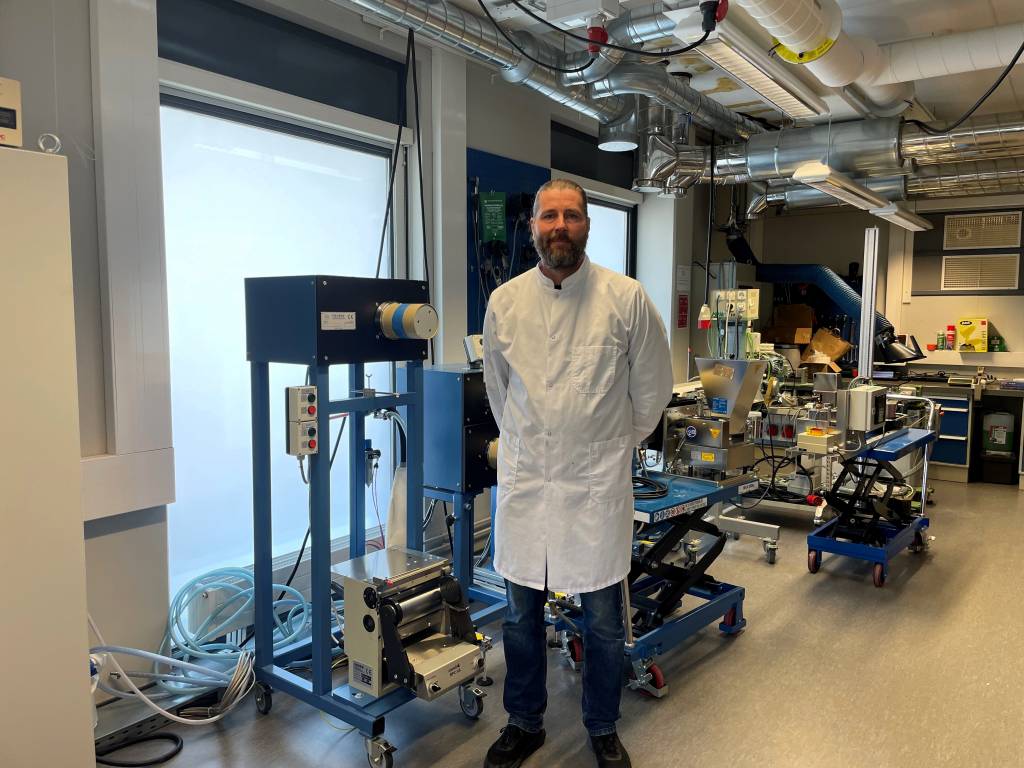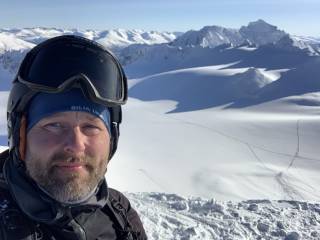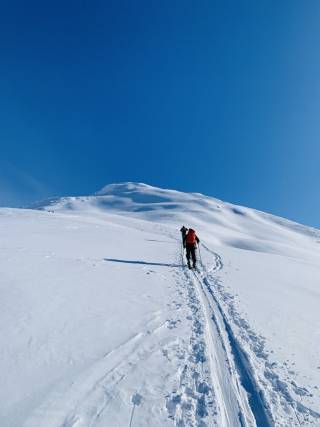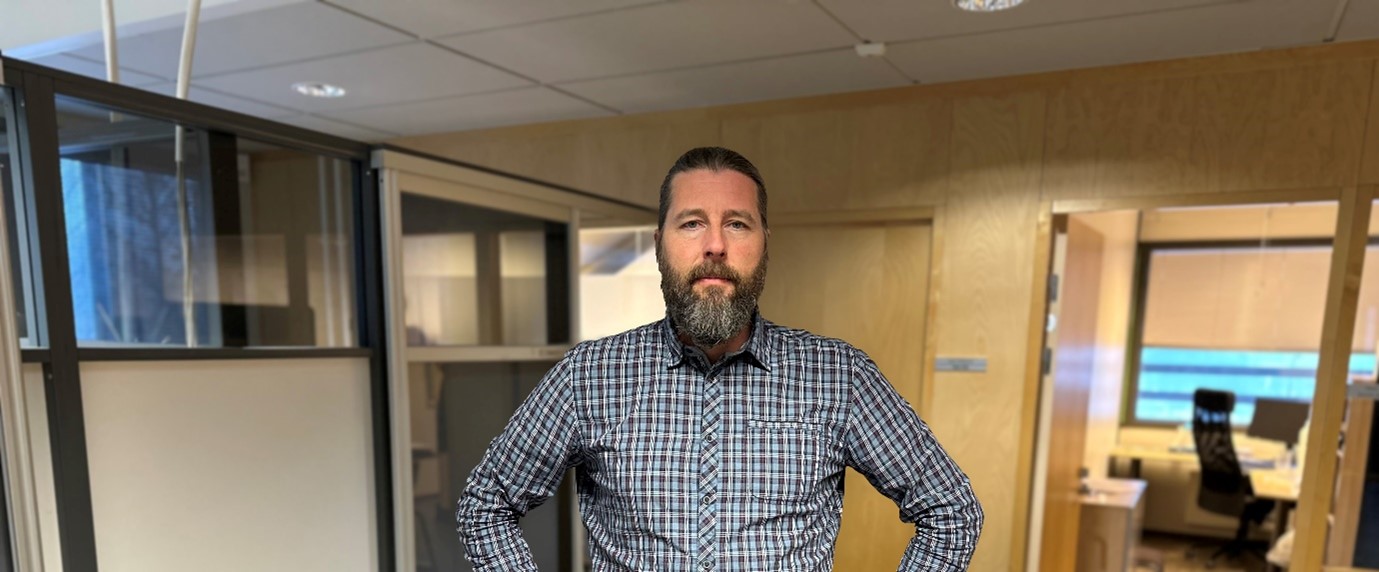Authors: Anastasiia Yiannacou, Miina Björninen
Photo: Ville Ellä
Ellä’s move into Arctic Biomaterials Oy hasn’t severed his ties to laboratory work. A brief lab tour around the wing reveals that the spanner he used to hide in one of the often malfunctional electrical cabinets is still there.
“Just showing this so that you could inform the current researcher to adjust the nobs at times,” Ellä grins.

Serving the needs of medical device manufacturers
Arctic Biomaterials Oy focuses on the development of premium bioresorbable implant materials and offers advanced manufacturing and research services for medical devices. Their core products are glass fiber-reinforced biodegradable polymers, well suited to bone implant applications but have also demonstrated their value as biobased household items. The primary clients of Arctic Biomaterials Oy are companies developing biomedical products. They develop and sell raw materials, as well as offer original equipment manufacturing [OEM] services based on design specifications.

Research path to biomaterials
Initially, Ellä’s background was in polymer science at Tampere University. After a research exchange at The University of Manchester Institute of Science and Technology (UMIST) in 1996-1997, he worked as a research assistant and then as a project researcher from 1998 to 2001. Subsequently, Ellä pursued a Ph.D. at the Institute of Biomaterials under the guidance of Prof. Pertti Törmälä and Prof. Minna Kellomäki and defended in 2012.
During his academic career, Ellä was a very hands-on scientist who specialized in the manufacturing of biomaterials. He contributed to more than 100 scientific papers and collaborated with various medical device companies.
One of Ellä’s most successful projects at the university was the development of a scaffold for arthritis patients in collaboration with Scaffdex Oy. He finalized the production of high-quality fibers for this project.
Transitioning from academia to industry
“I wanted to continue in academia. I felt that I owed my contribution to the university as I had gained so much experience,” Ellä recalls. He applied for a professorship but lost the competition to Jonathan Massera, a renowned expert in bioceramics.
Despite not securing the professorship, Ellä had already received an open “come when you want” type a job offer from Arctic Biomaterials, a former collaborator, and he seized the opportunity immediately.
“And come to think of it, I never actually felt that I lost something. It was more a feeling that whatever happens, I will win in this, since I already had new and exciting things waiting for me,” Ville recalls.
Ellä joined Arctic Biomaterials as a principal scientist, where he experienced the remarkable growth of the company from its initial 10-member startup team, which expanded to employ 50-60 individuals.
Transitioning to a management position from academia put leadership skills to a whole new level. Understanding and trust between the team members directly reflected on the success of the whole company. Collaboration skills and the right expertise at the right time were critical.
“The most challenging aspect of this job is to make tough decisions when it comes to leading people,” Ellä confirms.
Nevertheless, certain aspects from academy have remained —occasionally, Ville find himself being a hands-on engineer in the production facility, among other responsibilities.
Transparency in academia and business
Ellä appreciates the emphasis on deep thinking, reflection and thorough examination of concepts in academia. However, he also observes that the current pressure in academia for commercialization is growing and could risk the essence of academic research and the invention process.
Academia allows for more open disclosure and critique of once own research findings. But how does Ellä find transparency in business?
“ I find transparency in business a more complicated issue compared to the academic world. In business you must know what information is good to release, for example, for marketing purposes, and what information is to be kept in-house for your own IP [intellectual property]. Not all IP is worth patenting as well.”

Being good enough
In business, there is less time for decision-making than in academia. The development of some promising products may need to be stopped if they have not realized their potential on time. This all requires a solemn strategy – knowing when to stop and move on to option B.
“The products may not need to be the best solutions in the world, but they must be good enough. Achieving the right balance between efficiency and quality is crucial.”
Meeting the customer’s needs is a complex and time-consuming process that involves intensive back-and-forth discussions to understand the specifics of the request. The development of a new product could take around two years.
“Sometimes it is hard to understand what companies need when they approach us with a product request. We invest a lot of time in carefully explaining the process and what it takes to meet the technical needs. During the product development, I iteratively identify the weakest and missing points that need improvement,” Ville Ellä notes.
The best takeaway from the university?
“Learning how to find and effectively utilize information,” Ellä states.
From a lighter perspective, university time sparked several adrenaline-saturated hobbies: rock climbing, downhill skiing, cross-country skiing and snowboarding. He goes on to describe hair-rising story of a surf adventure that didn’t go well. The hobbies sound quite stressful added with the challenging work.
“Backcountry skiing in mountains helps me to stay calm and resilient – something that I can use at work,” He smiles.


